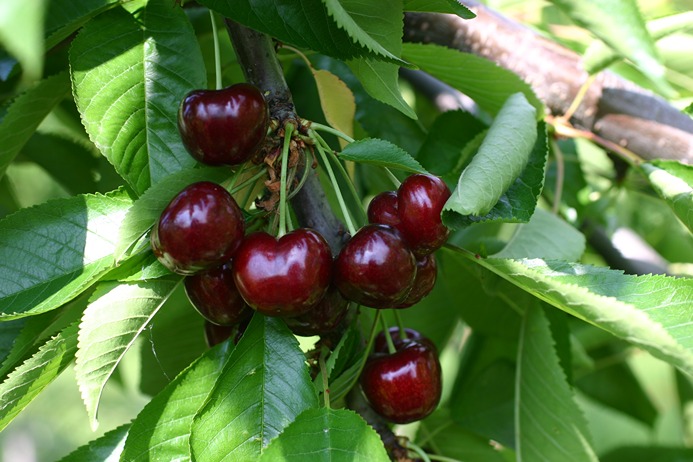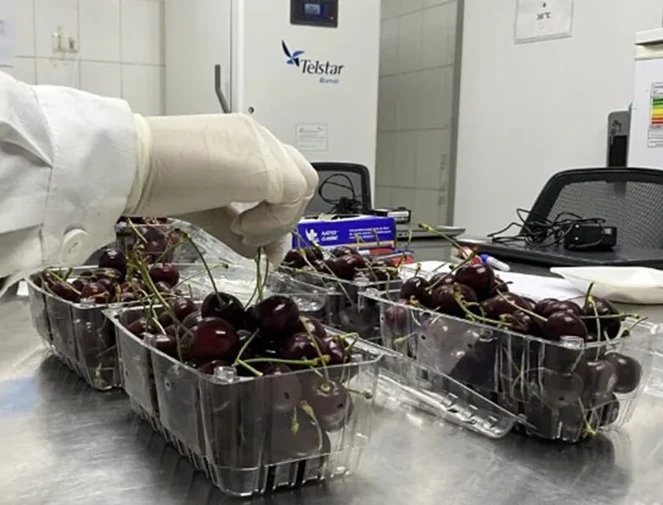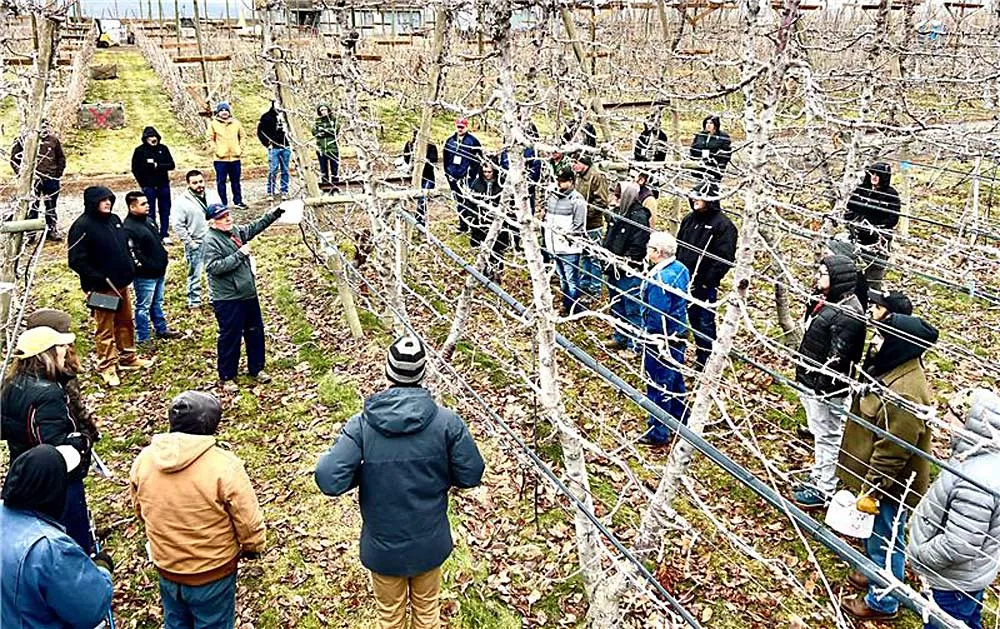“The production in Río Negro and Neuquén has been very important and full; we can foresee that the region will achieve a record production and certainly also in the exportable balance of Argentine cherries, especially in that region,” said the general director of the Argentine Chamber of Integrated Cherry Producers (CAPCI), Aníbal Caminiti, in an interview with Portalfruticola.com.
He commented that they are currently in full production in the lower valley of the Chubut River, while last week the harvest began in the Sarmiento area, a bit further south. “By early January, the harvest will begin in Los Antiguos,” he said.
Caminiti explained that the Chubut region faced some climatic episodes that caused a decrease in the projected outlook, “especially due to rain and hail, which are uncommon in that area, and have partially reduced the projected production for this year.”
Regarding Los Antiguos, he said that production is now reaching its fullness, which seems quite good, without any alteration in terms of climate.
Argentine cherries
The general director of CAPCI was clear in stating that Argentina is not growing in planted area, or at least has not grown in the past 10-15 years, to the extent anticipated or desirable. “We have grown in a very modest and moderate way; however, we are seeing increases in the same period in exportable balances, and this is due to significant improvement in orchard management and productivity, but undoubtedly all of this is always subject to a good season from a climatic perspective.”
He added that the province of Río Negro had been affected by climatic conditions in several previous seasons, but “this year the weather worked in favor of excellent cold accumulation, a spring that accompanied with appropriate temperatures and without significant episodes, so it had a full production that fully expressed itself this year.”
The good results were due to favorable weather conditions, “but also to the work done in the fields, by the growers, by the companies, accompanied by a climate that, in addition to good productivity, has generated excellent fruit quality,” Caminiti expressed.

Strategy for Argentine cherries
When asked about the country's varietal scheme, Caminiti explained that it is very similar to that of Chile, “with early varieties such as Royal Down, followed by Santina, Lapins, and in some regions Regina, ending with Sweet Heart.”
He recalled that this year, on a commercial level, early varieties such as Nimba and Pacific Red appeared, which had their first productions in week 43 and in some cases had already recorded their first overseas shipments.
He added that, for the first time, Rio Negro had an exportable production of early varieties, with young plantations that were not treated with cyanamide, which in the future will allow for earlier production, with fruits that can reach the foreign market in week 42.
“This opened the possibility of supplying Argentina during the first fruit window with excellent productive results, fruit quality, and the opportunity to achieve the best returns in the cherry sector in the Northern Hemisphere,” added Caminiti.
In this sense, he explained that Argentina’s strategy is to position itself in the earlier windows. “It is no coincidence that experiences are being developed in the provinces of La Rioja and Jujuy,” he said, adding that the government of the province of Mendoza is also working to have a pest-free area by 2027.
“This will open up a possibility for productive and commercial development of early cherries located north of the city of Mendoza.”
He clarified that the Río Negro and Neuquén area has developed early varieties, with an advance of 7, 10, or 15 days compared to the traditional offer in Argentina, starting in this region with Royal Down.
Caminiti added that each region has its own strategy. “For example, the Chubut region is working to advance the Santina harvest, and the southernmost region with new late varieties to enter international markets.”
When asked about the Chinese New Year, he explained that it could be important for some Argentine companies operating in China and having the opportunity to participate. “The Argentine cherries are important in terms of early and late fruits, as well as quality. We handle a small volume; over 70% is transported by air, and we want quality fruit.”
Outlook for Argentine cherries
The general director of the Argentine Chamber of Integrated Cherry Producers commented that, from a productive point of view, the province of Chubut is mainly oriented towards the American market, and the late offer has a share in China and other markets.
“For now, the sector has good expectations, and we are waiting for the weather to remain favorable,” he said.
He concluded by saying, “We are waiting to see how the season ends, to see if our forecasts with better exportable balances will come true. For now, we believe they are coming true.”
Source: Portal Frutícola
Image: SL Fruit Service
Cherry Times - All rights reserved













